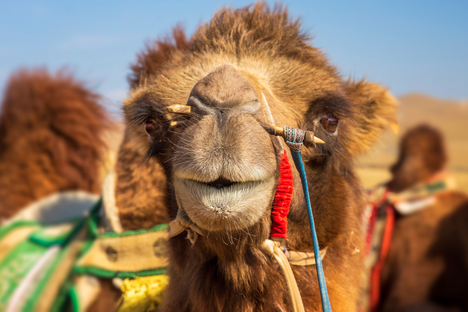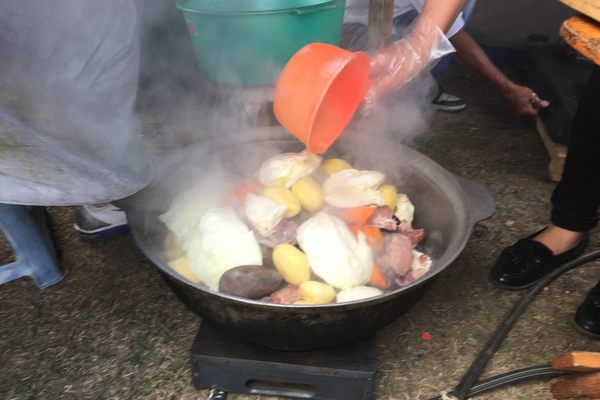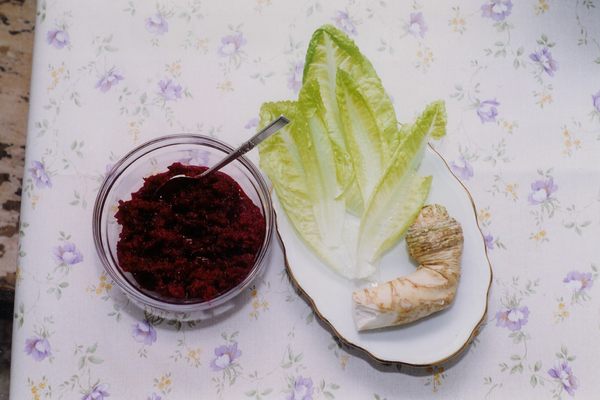When Mongolians celebrate the Lunar New Year with a days-long holiday called Tsagaan Sar, the centerpiece is usually a fabulous ul boov. Ul boov means “shoe sole cake”—a humble name for a towering dessert that’s steeped in tradition and plays a role similar to a Christmas tree or family shrine.
In physical terms, ul boov consists of layers of fried cakes—each of which resembles the cross-hatched bottom of a shoe—decorated with chunks of sugar, wrapped candies, and aarul, a sweet hard cheese. To outsiders, the sturdy cake tower can look like a pile of twinkies. But there is more to the dessert than meets the eye.
Each aspect of ul boov has social significance. Families make the sole-like impression in each cake with a wooden stamp that they pass down through generations. Since each stamp is unique, ul boov designs identify families like a fingerprint. Tradition dictates the number of layers in the cake, too. Elders prepare seven layers, young couples stack three layers, and everyone else makes five layers: Height corresponds to age and status, and odd numbers symbolize happiness. Stacking the cakes involves the ritualistic precision and care involved in lighting a menorah. A finished ul boov symbolizes Mount Sumeru, a sacred Buddhist mountain.
Ul boov is both dessert and spectacle. It can serve as a tasty treat at weddings and other celebrations, or as a meaningful decoration in the home. Either way, it’s a sweet way to ring in the new year.
Written By
 Anne Ewbank
Anne Ewbank
Sources
- www.unesco.org/archives/multimedia/?pg=33&s=films_details&id=2187
- books.google.com/books?id=-JLkCgAAQBAJ&pg=PT87&lpg=PT87&dq=Mount+Sumeru+ul+boov&source=bl&ots=q7GnuhLNPO&sig=MfbBRsqpJbdKSH5OEqM1Yr30AsU&hl=en&sa=X&ved=0ahUKEwi2xsjdia7QAhUWwGMKHdsjC28Q6AEILjAC#v=onepage&q=Mount%20Sumeru%20ul%20boov&f=false
- books.google.com/books?id=Yfhn8G_9aZIC&q=%22ul+boov%22&dq=%22ul+boov%22&hl=en&sa=X&ved=0ahUKEwiRk9PY4KLXAhWmy4MKHcx7Au4Q6AEITDAG
- roadsandkingdoms.com/2013/white-moon-rising/
- www.asian-recipe.com/mongolia/mongolian-meat-dishes.html#Boov
- food52.com/blog/18471-a-cake-that-s-more-spiritual-offering-than-last-course















